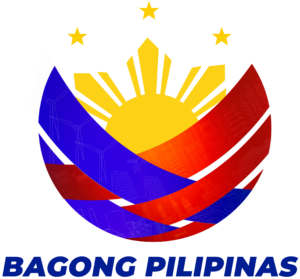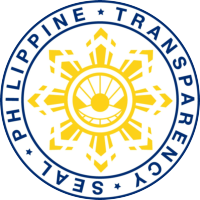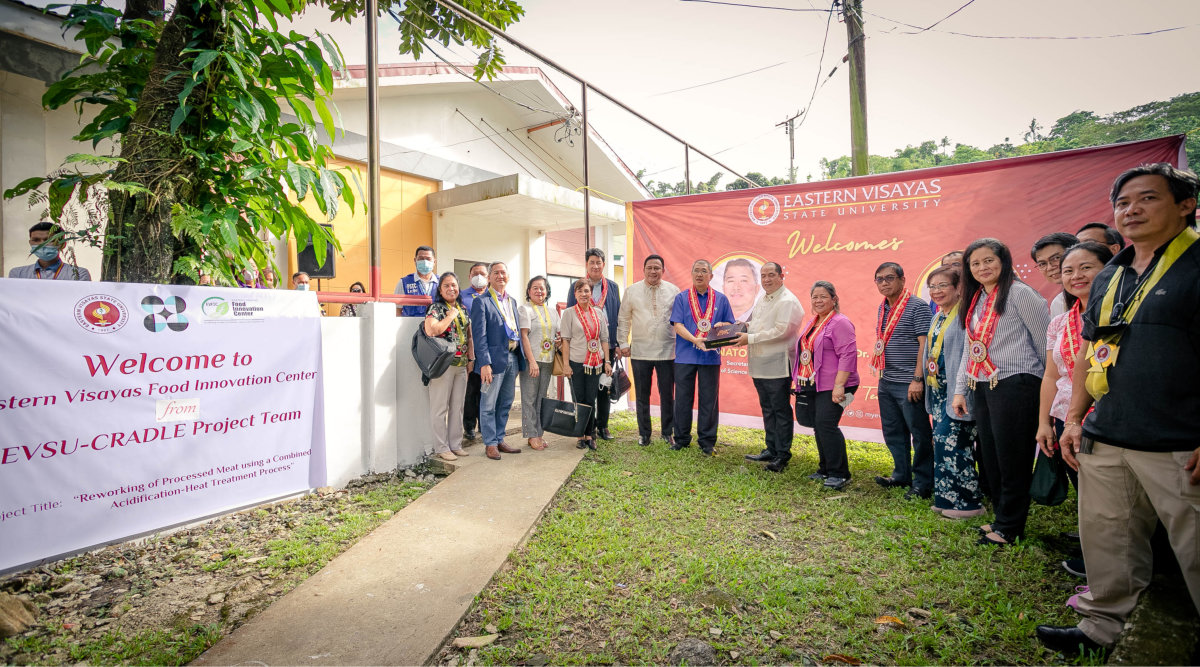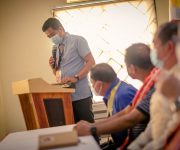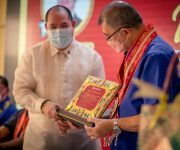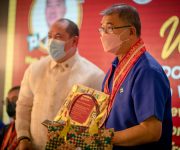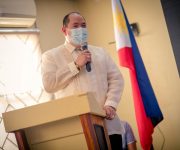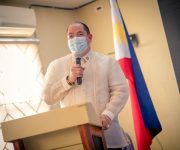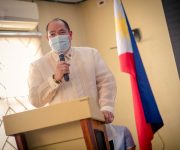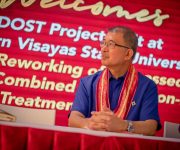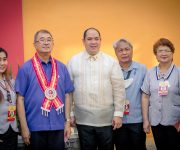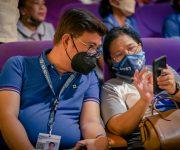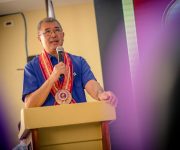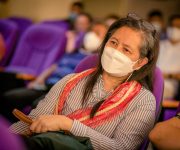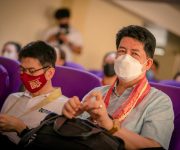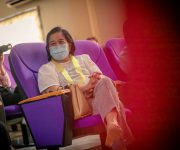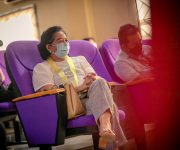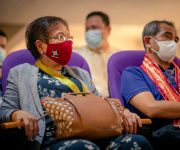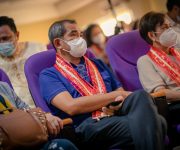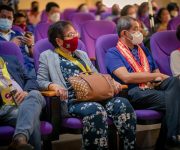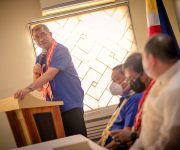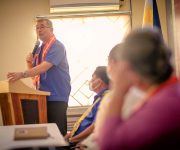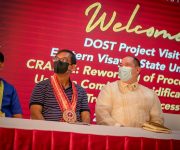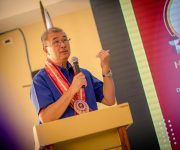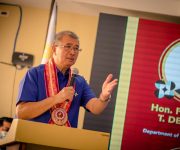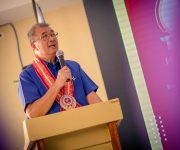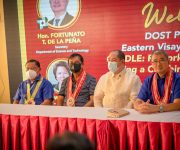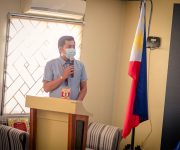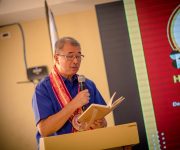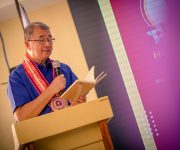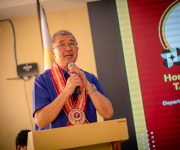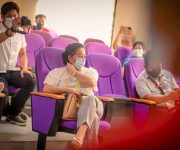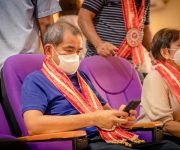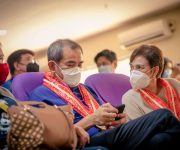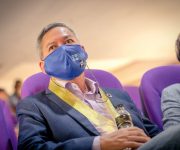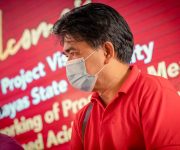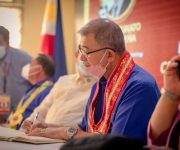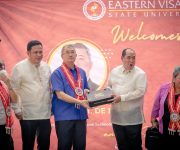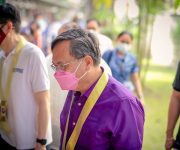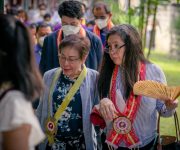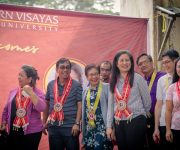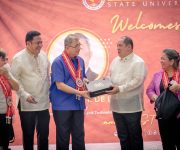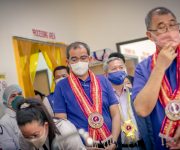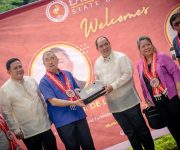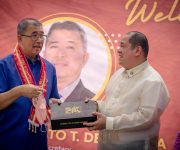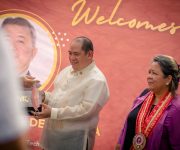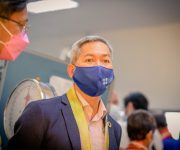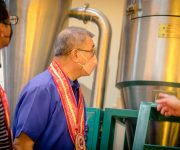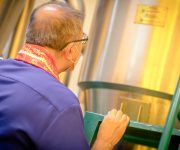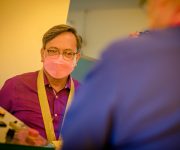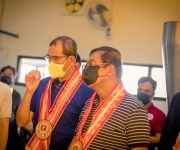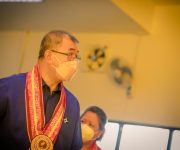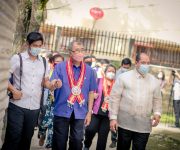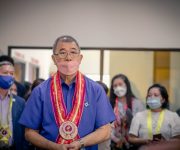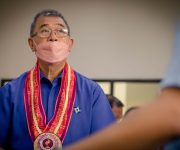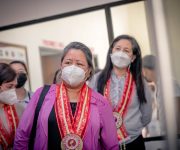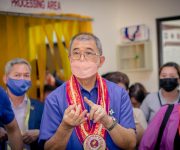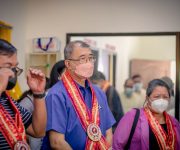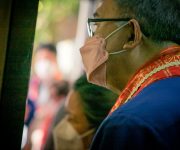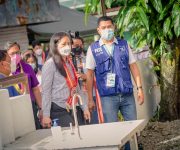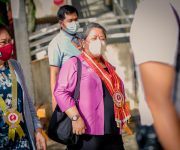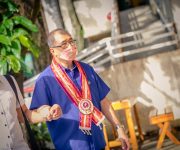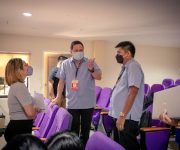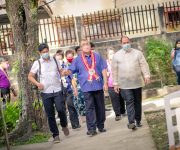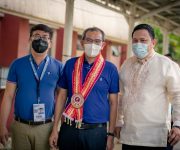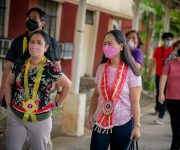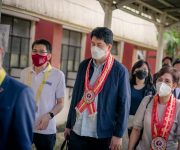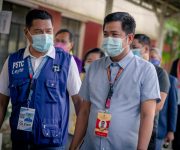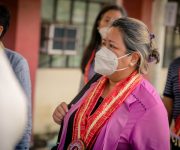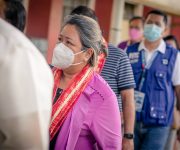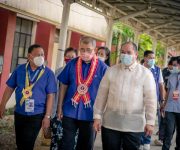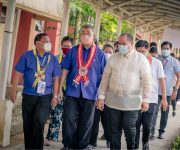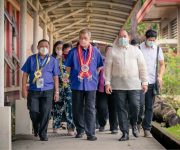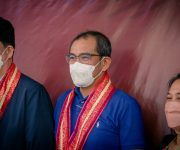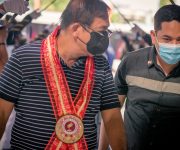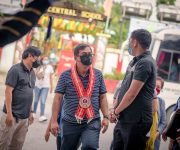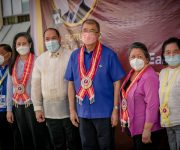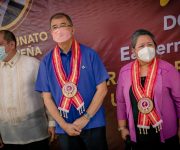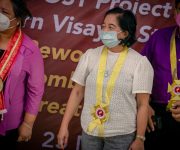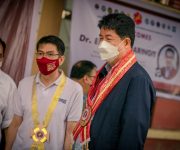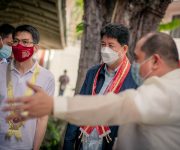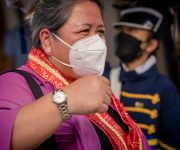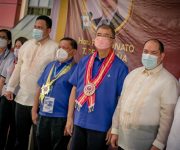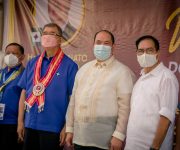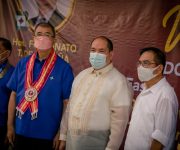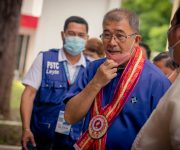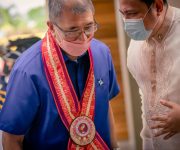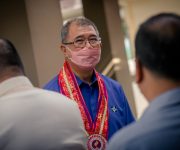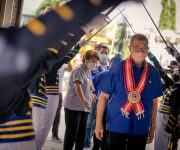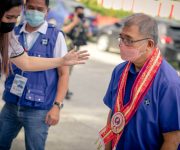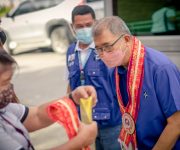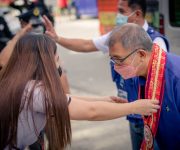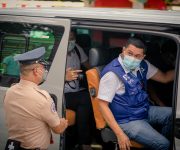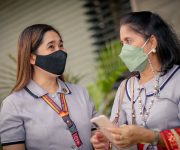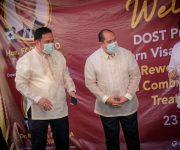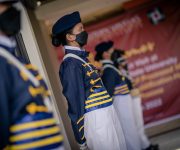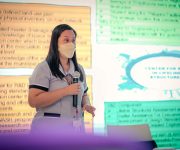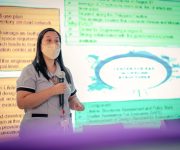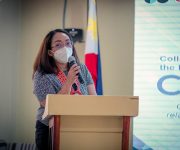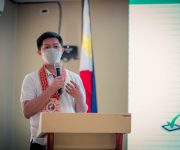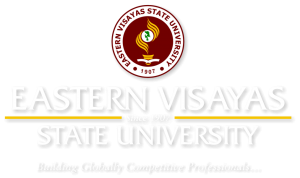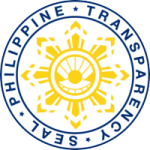Dr. Dennis C. De Paz, University President, and key officials warmly greeted the DOST Secretary Fortunato T. de la Peña, and DOST Undersecretary Rowena Cristina L. Guevara, as well as their team for research and development, for their team visit to EVSU-Food Innovation Cente (EVFIC) for the EVSU-CRADLE Project, a food innovation venture titled “Reworking of Processed Meat Using Combined Acidification-Heat Treatment Process.” The project involves the transformation of lechon meat into a variety of lechon products
The visit started with the DOST’s Consultation Meeting and Pre-assessment of Proposals for NICER, CRADLE, and I-CRADLE, which occurred at the ORDEx Studio Room.
NICER, which stands for Niche Centers in the Regions for R & D, is a sub-component program of the DOST’s Science for Change Program that aims to boost industrial sustainable competitive advantage by enabling HEls in the Regions to conduct quality research that will encourage regional growth as well as facilitate institutional grants for HEls across regions to help enhance their S&T infrastructure.
During the Consultation Meeting, the DOST presented one component program of the NICER, which is the Cradle, which ultimately grew into the iCRADLE program. CRADLE stands for Collaborative R&D to Leverage the Philippine Economy, and it strives to foster synergistic academe-industry relationships in order to revitalize Philippine R&D. The I-CRADLE program intends to solve necessities and dilemmas through academe-industry collaborative R & D.
The DOST consultation meeting emphasized the three leading challenges in the Philippine Science, Technology, and Innovation Ecosystem, which are weak links among industry, government, and academia. High S&T HRD production but insufficient opportunities to put their specialized education to use. Furthermore, S&T-driven MSMEs are still scarce, contributing little to economic growth.
As a result, CRADLE will be advantageous through collaborative R & D because it has a high probability of success. Since research projects will be carried out by professionals from academia and R & D institutions, it will reduce the financial burden for R & D as the DOST would, and it will only require 20% counterpart from the corporation as a readily adoptable research outcome. Hence, results from the venture will undoubtedly be implemented by the company, that really can significantly raise the market edge.
The Center for R&D in Lifeline Structures, proposed by Engr. Roxcella T. Reas of the College of Engineering, is a NICER proposal. The proponent, Engr. Reas, identified the issues that exist, the R&D inconsistencies and components, the contributing factors to the Center of Lifeline Structures in Region VIII, and the reasons for why EVSU, in which the proponent noted in her discussion as the central point for engineering in Region VIII. She further asserted that the institution has potent collaboration with government and private institutions. Her presentation has included potential outputs and outcomes. Following her presentation, DOST key personnel provided suggestions and comments on how to improve the proposed nicer program.
At the very same moment, the orientation for the Balik Scientist Program (BSP) and the Philippine Council for Industry, Energy, and Emerging Technology Research and Development (PCIEERD) programs was held in the ORDEx Training Room. Julie Ann Atienza and Ederlyn Rogelio, Science Research Specialists with EVSU Faculty BSP Recipients, conducted a consultation and review of its implementation.
Further, one of the representatives of DOST EXECOM members interviewed the University President, Dr. De Paz, which resulted in an event in his office. The interview focused on how Dr. De Paz will motivate researchers at the institution to conduct collaborative R & D, as well as other questions on topics related to the Science for Change Program.
According to Dr. Dennis C. De Paz, “Research and development do not end with a piece of paper. It must be commercialized in order for people to appreciate and understand that science can produce valuable products that can help improve our economy”.
In the afternoon, the DOST team, led by Hon. FORTUNATO T. DE LA PEÑA, DOST Secretary, and Dr. ROWENA CRISTINA L. GUEVARA, DOST Undersecretary, and company, and the institutions’ key officials, together with the college deans, visited the EVSU-CRADLE Project, a food innovation and research undertaking, categorized as “Reworking of Processed Meat Using Combined Acidification-Heat Treatment Process,” which took place in EVFIC, the highpoint of the DOST’s visit to EVSU.
Research is an innovative endeavor because it creates the latest ideas and products, develops employment rates, reduces manufacturing costs, and contributes significantly to our economic development and greater regional and national welfare. Whereas the EVSU-Cradle Project is the result of research. EVSU will continue to be successful in conducting studies and developing projects as a result of research, which will undoubtedly propel the region’s growth in the economy.
“The Science for Change Program is Science for the People”. Eastern Visayas State University supports the Science for Change Program!
BALIK PUSO. BALIK PILIPINAS. BALIK SCIENTIST.


